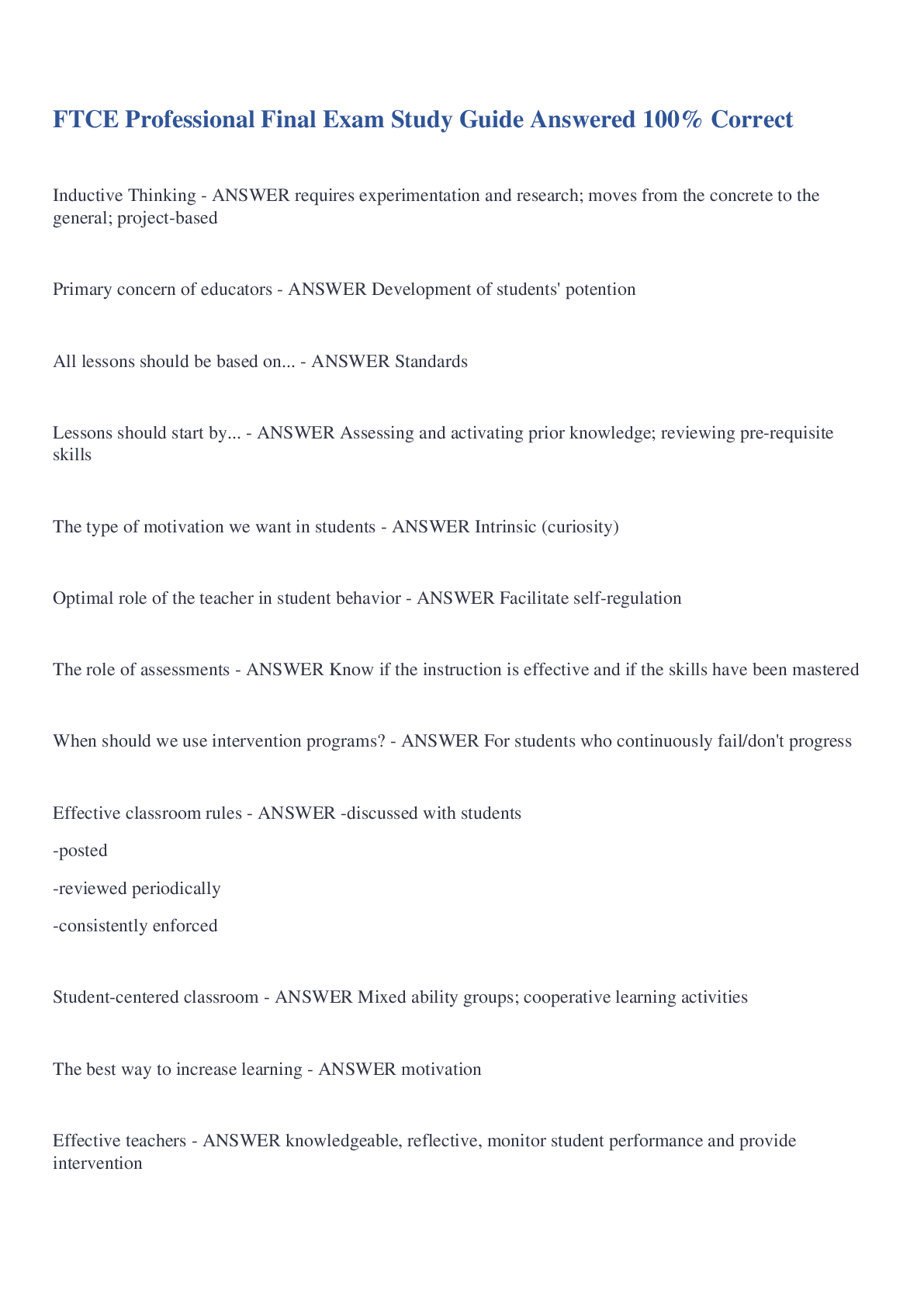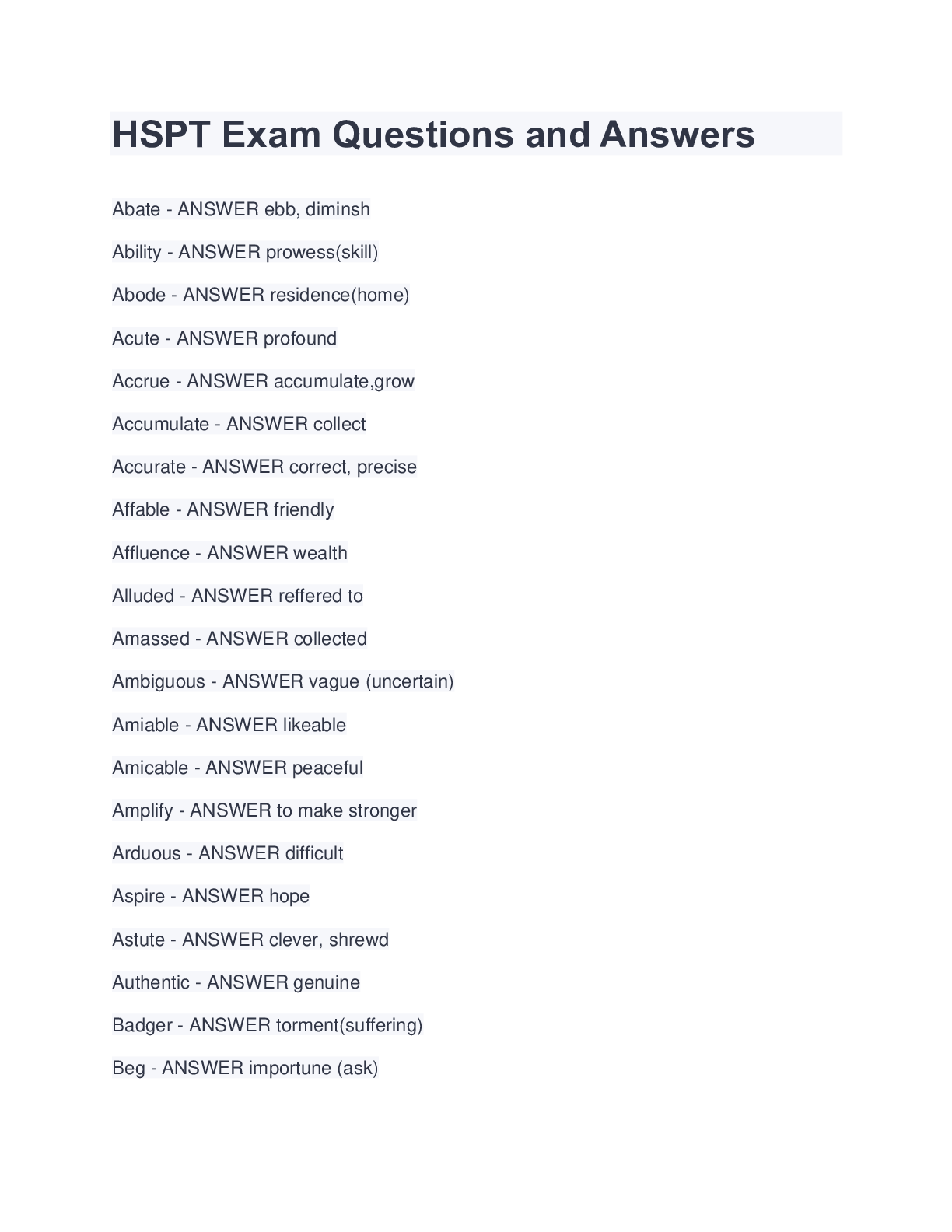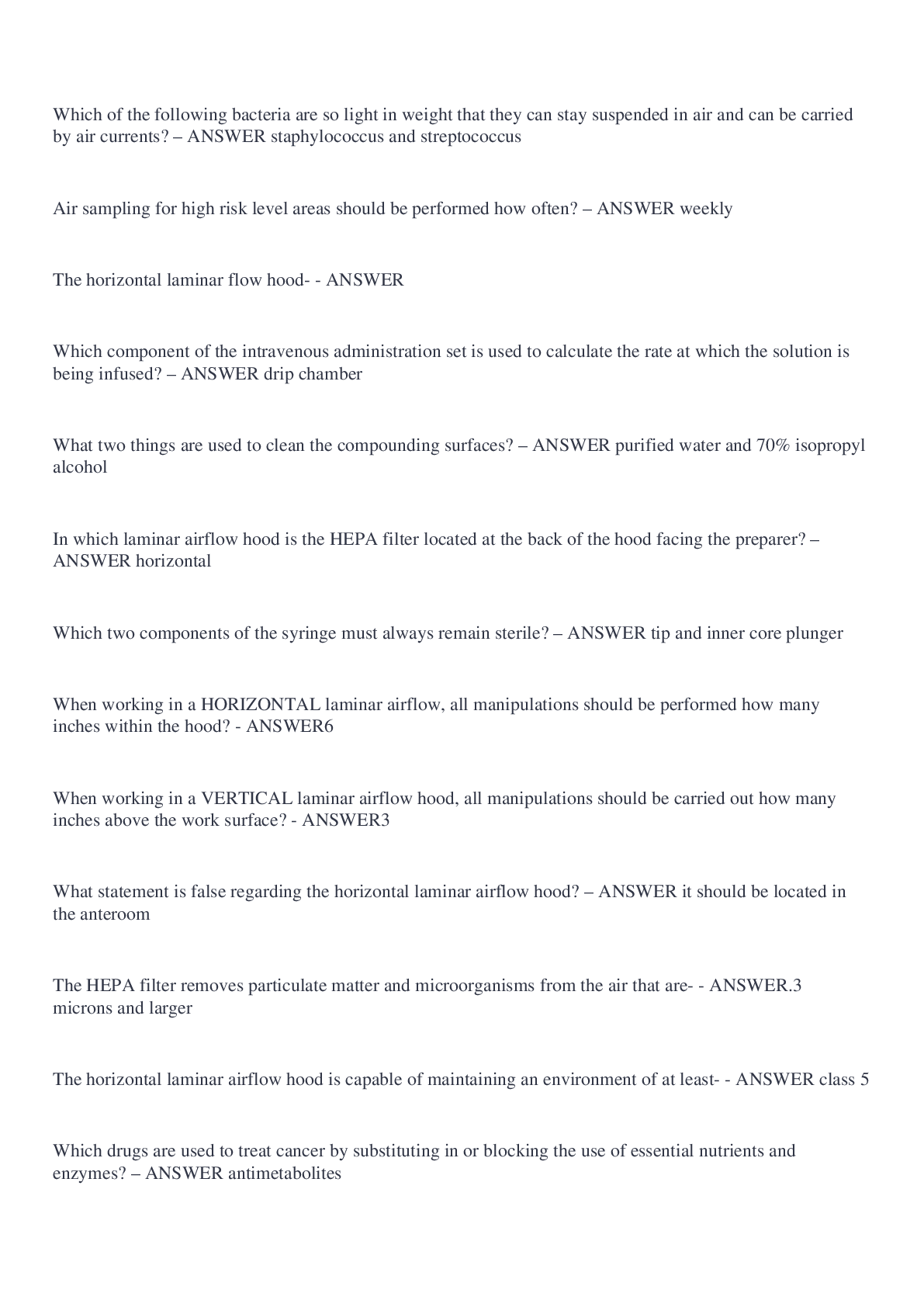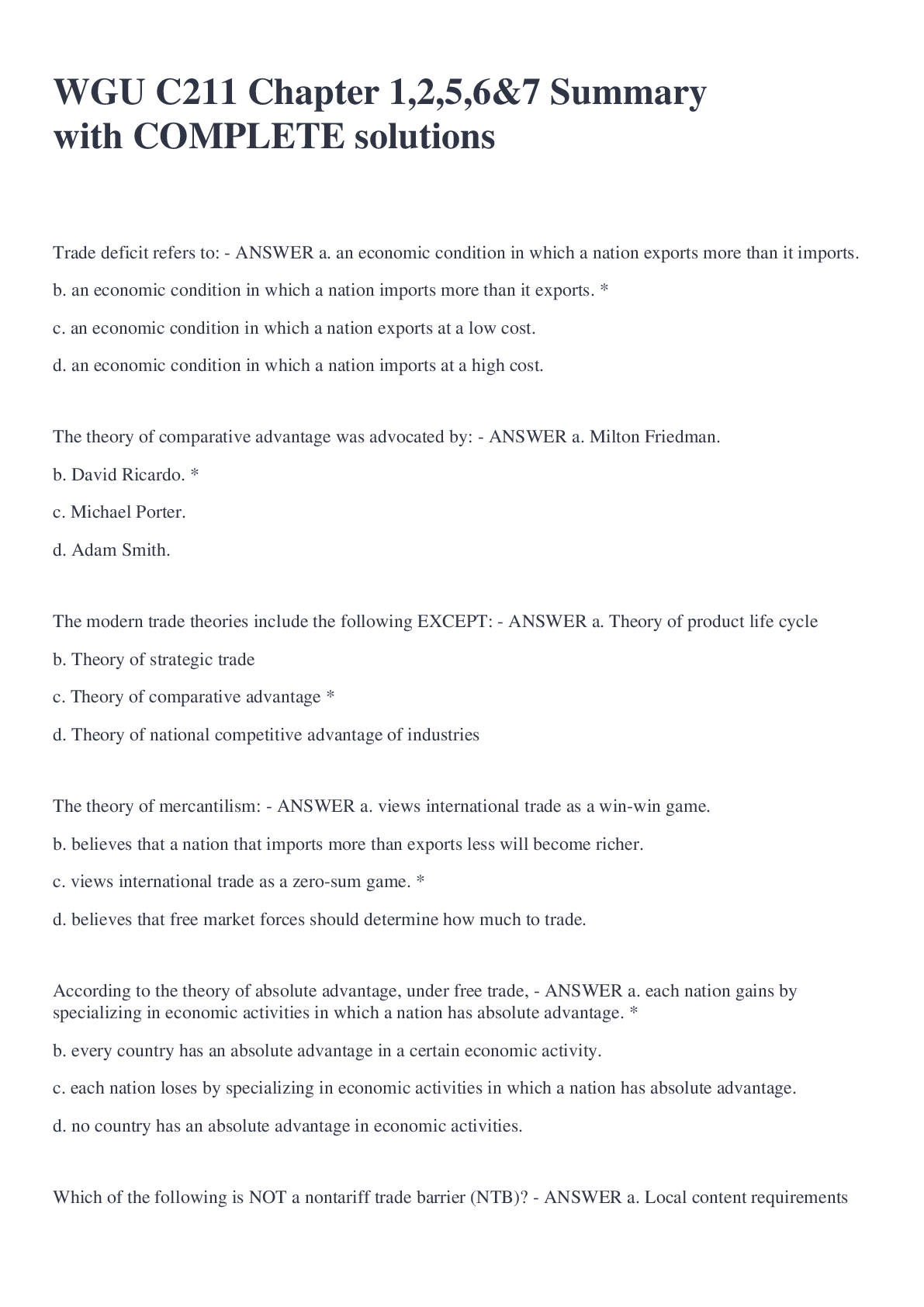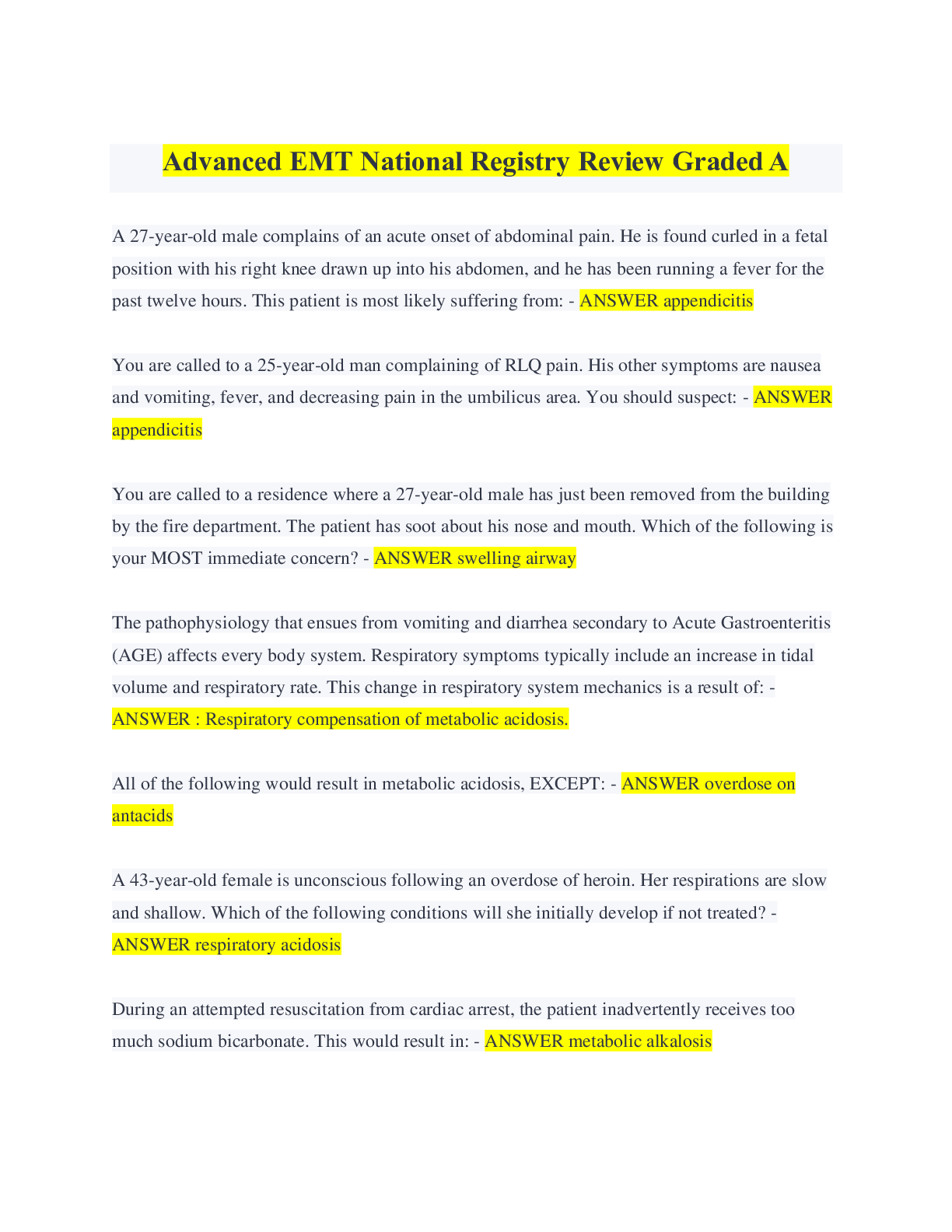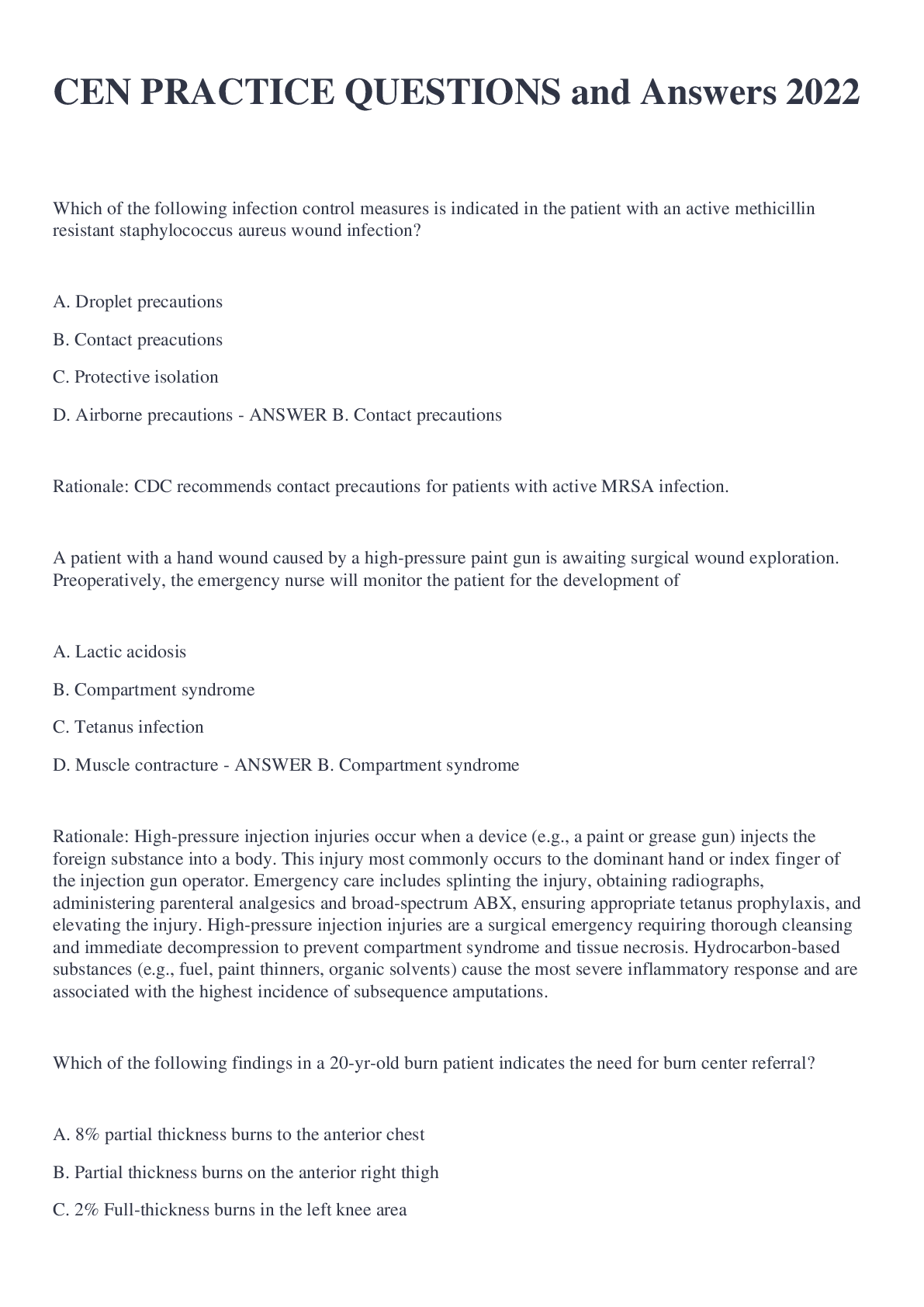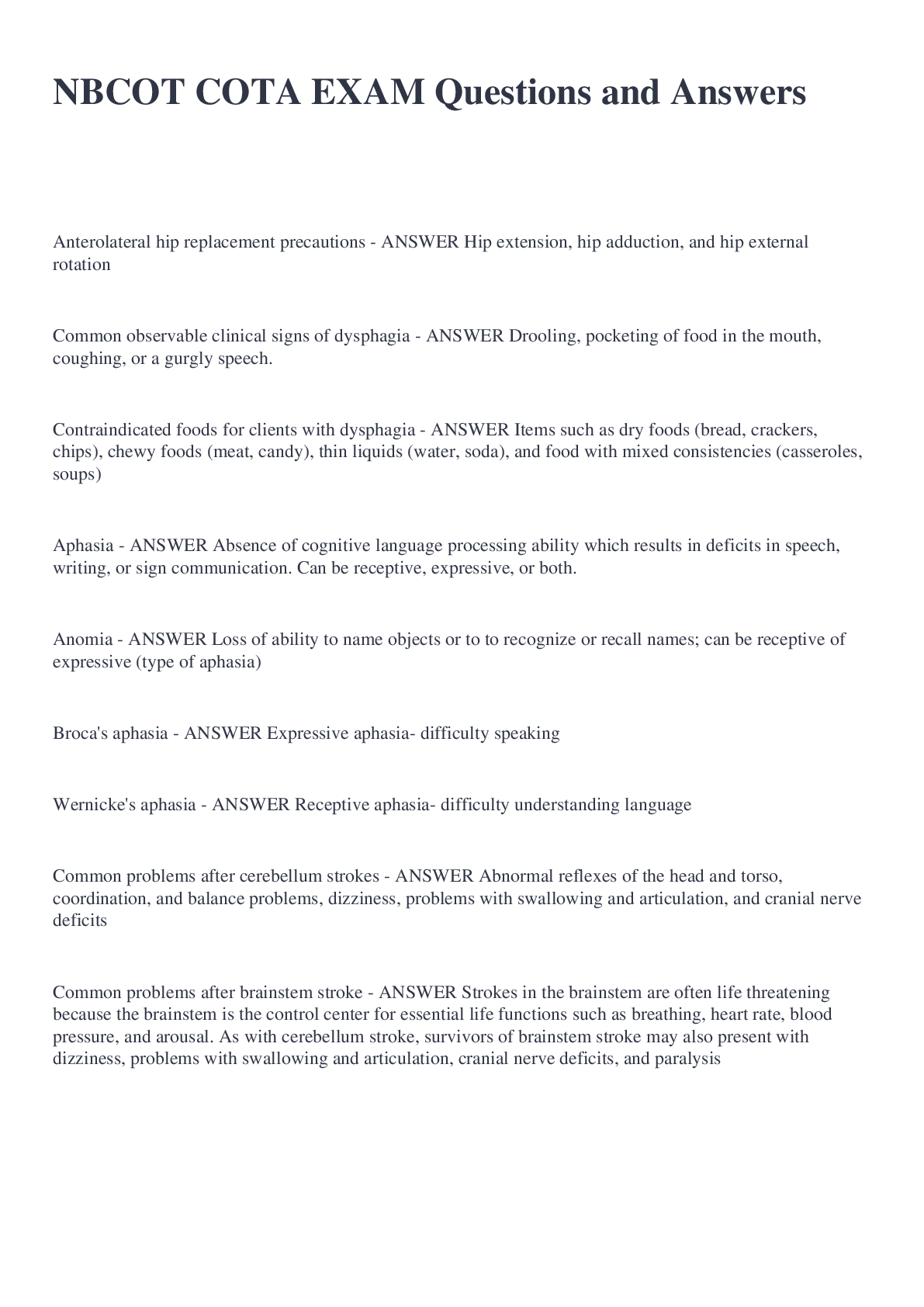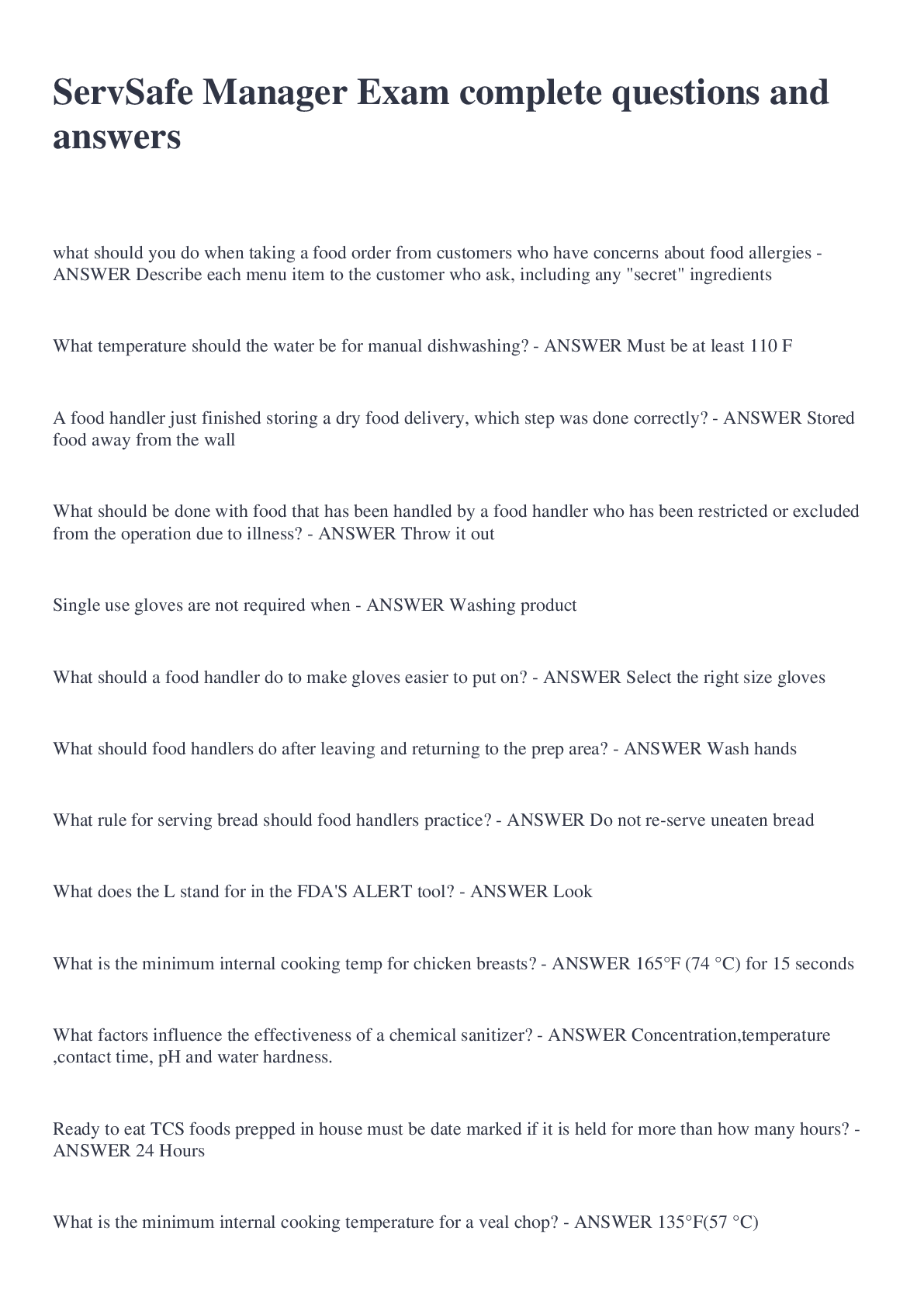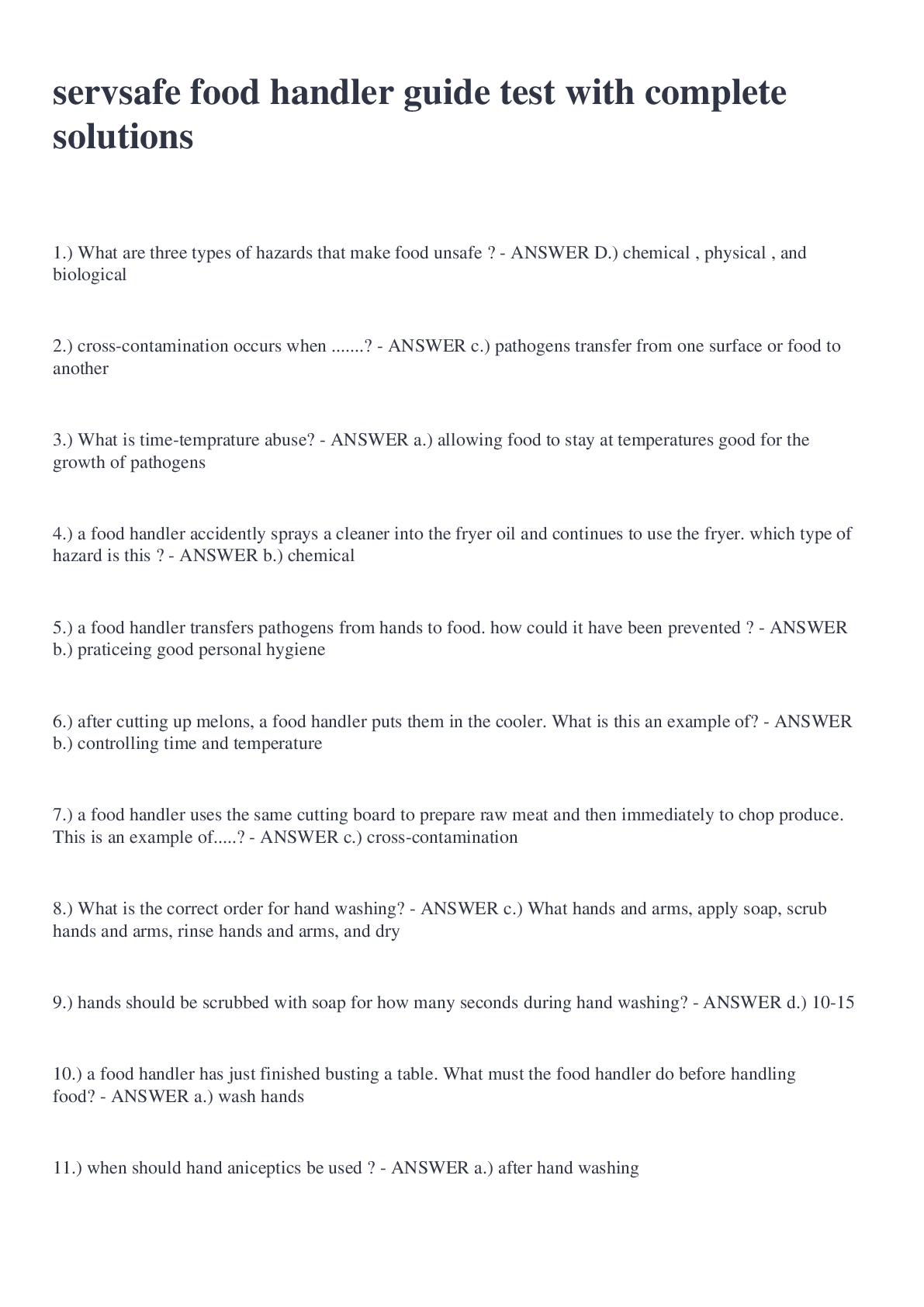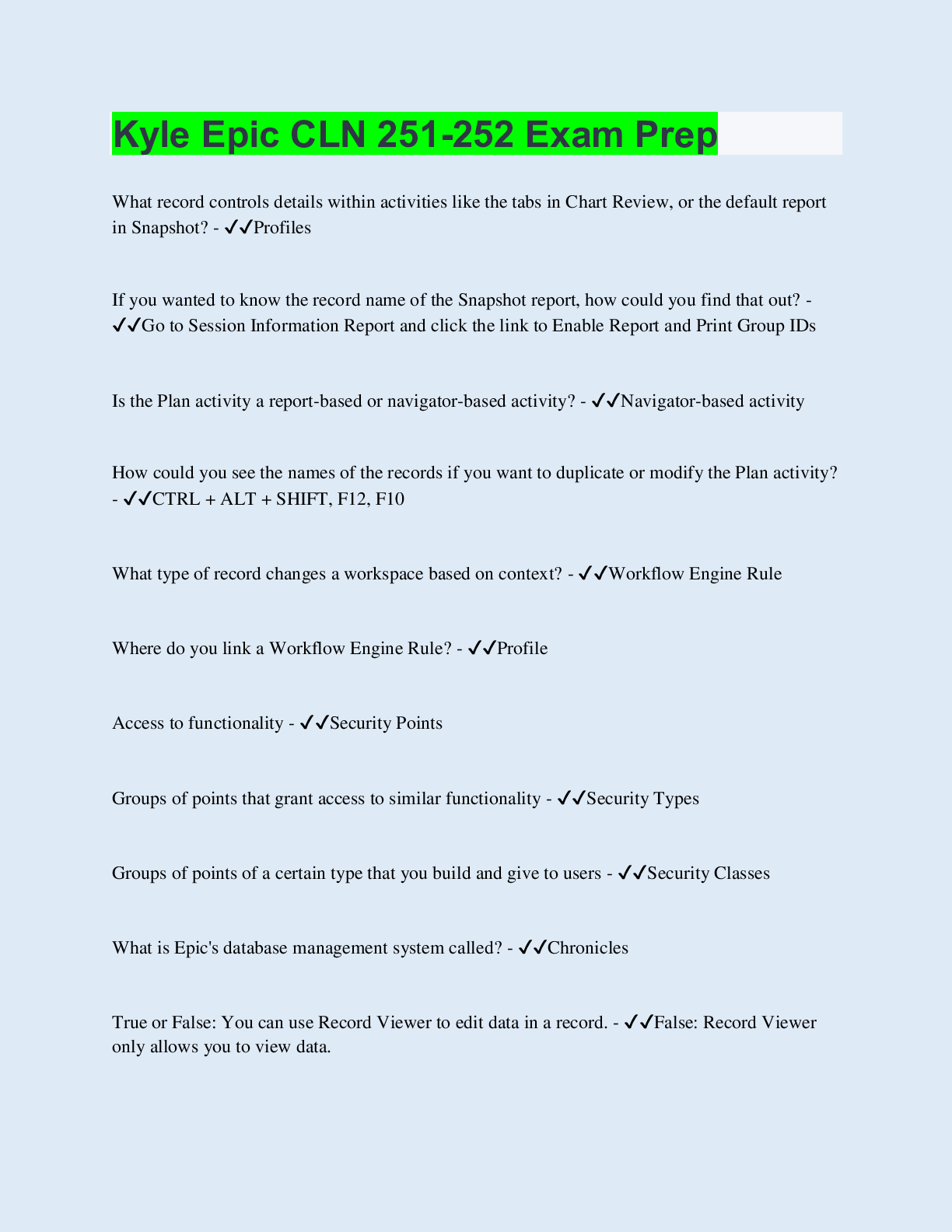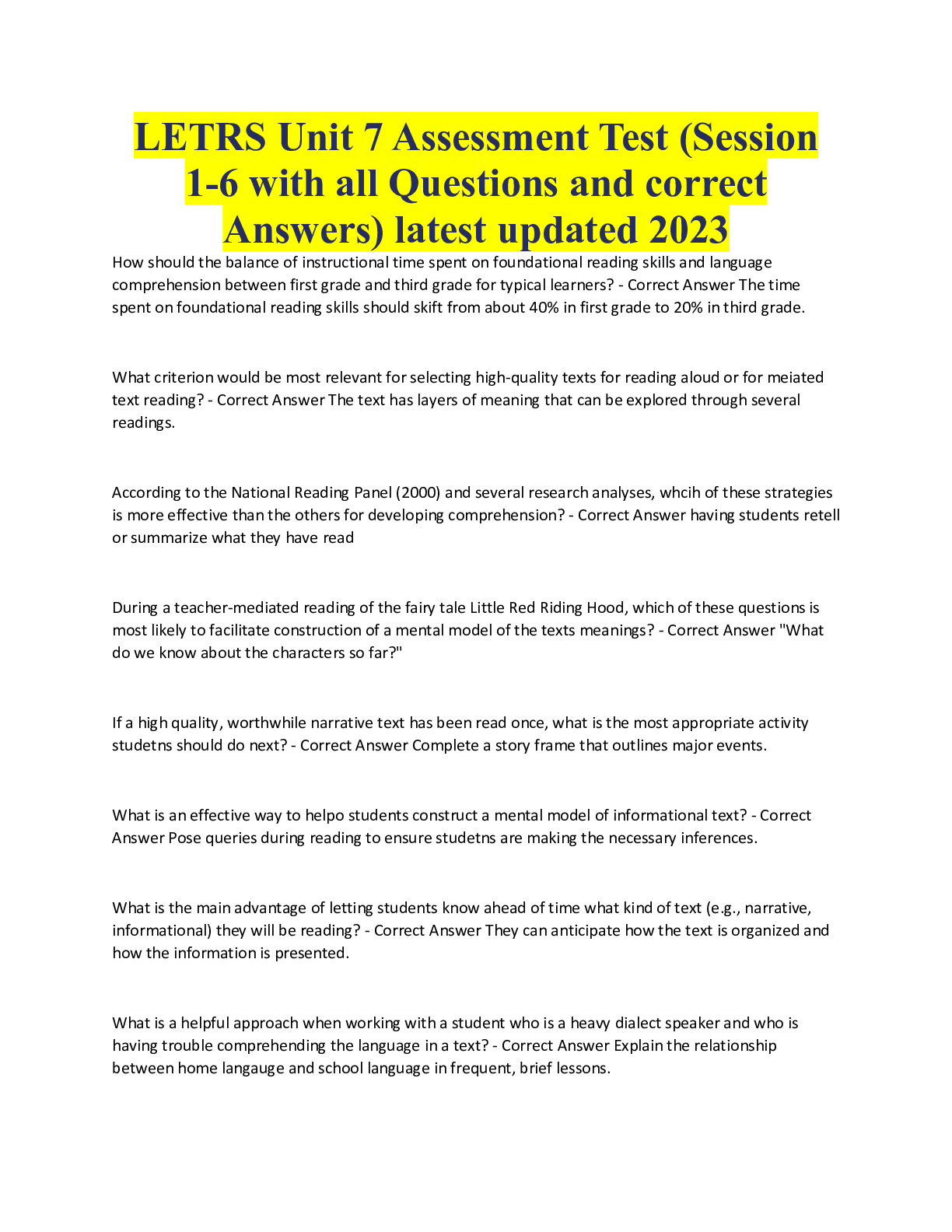BCAT Study Guide (Exam Graded A+)
Document Content and Description Below
DSM 5 - ANSWER Social Communication interaction (need all 3) 1. Social emotional reciprocity 2. nonverbal communication (no eye contact) 3. difficulty w/ social relationships Autism Spectrum Dis... order (rate is 1/88) Deficits in Social-emotional Reciprocity - ANSWER 1. Deficits in Social-emotional Reciprocity: ranging from abnormal social approach & failure of normal back and forth conversation through reduced sharing of interests, emotions, and affect/response to total lack of initiation of social interaction Autism Spectrum Disorder (rate is 1/88) - ANSWER 1. Deficits in Social-emotional Reciprocity 2. Deficits in Non-verbal communicative behaviors used for social interaction 3. Deficits in Developing and maintaining relationships appropriate to development level (beyond those w/ caregivers) 4. Stereotyped or repetitive speech, motor movements, or use of objects (such as simple motor stereotypes, echolalia, repetitive use of objects, or idiosyncratic phrase) 5. Excessive adherence to routines, ritualized patterns of verbal or nonverbal behavior, or excessive resistance to change (motoric rituals, insistence on same route or food, repetitive questioning, or extreme distress at small changes) 6. Highly restricted, fixated interests that are abnormal in intensity or focus (strong attachment to or preoccupation w/ unusual objects, excessively circumscribed or preservative interests) 7. Hyper or hypo-reactivity to sensory input or unusual interest in sensory aspects of environment (apparent indifference to pain/heat/cold, adverse response to specific sounds or textures, excessive smelling or touching of objects, fascination w/ lights or spinning objects. 8. 3 levels of Severity across social communication & restricted, repetitive behaviors (requiring VERY substantial support - Level 3 requiring substantial support - Level 2 requiring support - Level 1) 9. Knowledge of research regarding treatment intensity 1:1 tx 30-40hrs wk / 2+ years (most receive 3years) 10. Knowledge of early intensive behavioral intervention research 11. Knowledge of foundational autism research (Autism appears by age 3; DSM 4 criteria) 12. Distinguishing btwn. evidence-based interventions vs. nonevidence-based interventions ASD: 1. Deficits in Social-Emotional Reciprocity - ANSWER Abnormal Social Approach - unusual social intentions (intrusive touching/licking of others) Failure of normal back and fourth conversations - poor pragmatic/social use of language (does not clarify if not understood; does not provide background information - failure to respond when name is called or spoken to - does not initiate conversations - one sided conversations/ monologues/tangential speech (train of thought wanders/lack of focus) Reduced sharing of interests - doesn't share - lack of showing, bringing, or pointing out objects of interest to other people - impairments in joint attention (initiating & responding) Reduced sharing of emotions/affect - lack of responsive social smile (response to other's smile) - failure to share enjoyment, excitement, or achievement w/ others - failure to respond to praise - doesn't show pleasure in social interactions - failure to offer comfort to others - indifference/aversion to physical contact/affection Lack of initiation of Social Imitations - only initiates to get help; limited social initiations Poor social imitations - failure to engage in simple social games ASD: 2. Deficits in NONVERBAL COMMUNICATIVE behaviors used for social interaction - ANSWER Ranging from poorly integrated verbal and nonverbal communication through abnormalities in eye contact and body language, or deficits in understanding and use of nonverbal communication, to total lack of facial expression or gestures. + +Impairments in social use of eye contact ++ Impairments in the use and understanding of body posture (facing away from listener) ++ Impairment in the use and understanding of gestures (pointing, waving, nodding, and shaking head) ++ Abnormal volume, pitch, intonation, rate, rhythm, stress, or prosody in speech ++ Abnormalities in use and understanding of affect - impairment in use of facial expressions (may be limited or exaggerated) - lack of warm, joyful expressions directed at others - limited communication of own affect (inability to convey a range of emotions, via words, expressions, tone of voice, gestures) - inability to recognize or interpret others' nonverbal expressions ++Lack of coordinated verbal and nonverbal communication - inability to coordinate eye contact/body language w/ words ++ Lack of coordinated nonverbal communication - inability to coordinate eye contact w/ gestures ASD: 3. Deficits in developing and maintaining relationships appropriate to developmental level (beyond those w/ caregivers) - ANSWER Ranging from difficulties adjusting behaviors to suit different social contexts through difficulties in sharing imaginative play and in making friends to an apparent absence of interest in people. ++Deficits in developing and maintaining relationships, appropriate to developmental level. - lack of "theory of mind" (inability to take another's perspective ++ Difficulties adjusting behavior to suit social contexts - doesn't notice another person's lack of interest in an activity or their distress/disinterest - lack of response to contextual cues (social cues from others indicating a change in behavior is implicitly requested - inappropriate expressions of emotions (laughing/smiling out of context) - unaware of social conventions/appropriate social Bx; asks socially inappropriate questions or makes socially inappropriate statements ("oh great, you're here") - doesn't recognize when not welcome in a play or conversational setting - limited recognition of social emotions (doesn't notice when being teased; doesn't notice his/her behavior impacts others emotionally) ++ Difficulties in sharing imaginative play - lack of imaginative play w/ peers, including social role playing ++ Difficulties in making friends - doesn't try to establish friendships - doesn't have preferred friends - lack of cooperative play; parallel play - unaware of being teased/ridiculed by other children - doesn't play w/ children their age/developmental level - has interest friendship but lacks understanding of the conventions of social interactions (extremely rigid; overly passive) - doesn't respond to social approaches of other children ++ Absence of interesting others - lack of interest in peers - withdrawn/aloof/in own world - doesn't try to attack attention of others - limited interest in others - unaware or oblivious to children or adults - limited interactions w/ others - prefers solitary activities ASD: 4. Stereotyped or repetitive speech, motor movements, or use of objects - ANSWER Simple motor stereotypes, echolalia, repetitive use of objects, or idiosyncratic phrase PEDIATRIC SPEECH or unusually formal language - ANSWER speaks like a little adult or "little professor" ECHOLIALIA - ANSWER Immediate or delayed repetition of words, phrases, or more extensive songs/dialogue Jargon/gibberish - ANSWER mature margining after developmental age of 24 months Rote Language - ANSWER from memory, without thought of meaning Idiosyncratic/metaphorical language - ANSWER language that only has one meaning to those familiar w/ the individual's communication style Neologism: use of new words Pronoun reversal: - ANSWER "You" for "I" not just mixing up gender pronouns refers to own self by name (not use "I") Perseverative Language - ANSWER repetition of a particular response such as a word or phrase despite absence or cessation of a stimulus Repetitive Vocalizations - ANSWER Repetitive guttural sounds Intonational noise making (babbling) Unusual squealing Repetitive humming Repetitive hand movements - ANSWER clapping, finger flicking, flapping, or twisting Stereotyped or complex whole body movements - ANSWER Foot to foot rocking dipping swaying spinning Unusual facial grimacing Excessive teeth grinding Repetitively puts hands over ears, not in response to loud sounds Repetitive picking Repetitive/perseverative action/play/behavior (if 2 or more components then considered routine) Abnormalities of posture - ANSWER Toe walking Full body posturing Intense body tensing Stereotyped or repetitive use of objects - ANSWER waving sticks dropping items lining up toys or items repetitively opens/closes doors or turns lights on/off Excessive adherence to routines - ANSWER Ritualized patterns of verbal or nonverbal behavior, or excessive resistance to change i.e., motoric rituals, insistence on same route or food, repetitive questioning , or extreme distress at small changes [Show More]
Last updated: 2 years ago
Preview 1 out of 9 pages

Buy this document to get the full access instantly
Instant Download Access after purchase
Buy NowInstant download
We Accept:

Reviews( 0 )
$7.00
Can't find what you want? Try our AI powered Search
Document information
Connected school, study & course
About the document
Uploaded On
Sep 21, 2022
Number of pages
9
Written in
Additional information
This document has been written for:
Uploaded
Sep 21, 2022
Downloads
0
Views
53


